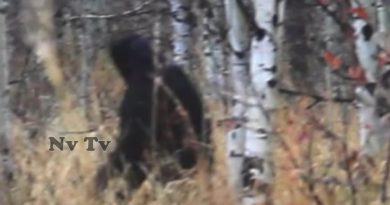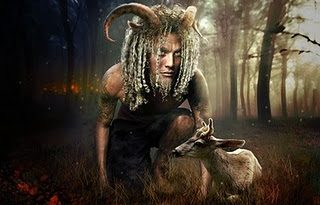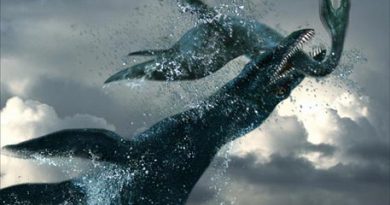The Maricoxi – Sasquatches of South America
The Maricoxi is a general term for several large ape-like creatures that have allegedly been seen in many parts of the jungle regions of South America. These may be cryptids or merely an undiscovered tribe. Percy Fawcett claimed an encounter with a group in 1914. They allegedly were extremely hairy, lived in villages and used bows and arrows. They spoke in grunts and lived to the northeast of a tribe called the Maxubi. The Maricoxi are essentially the sasquatches of South America. They are reported to be huge, ape-like beings that can stand up to 3.7 meters (12 ft) tall. Although they appear primitive, they’re said to be fairly intelligent, wielding bows and arrows and even living in villages.
Maricoxi are reported as being aggressive to humans. In alleged encounters, they attack humans on sight. They are said to be scared of the noise of guns. According to British explorer Colonel Percival H. Fawcett, who allegedly encountered the creatures while mapping out the jungles of South America in 1914, they were extremely hairy and lived north of a tribe called the Maxubi. They could only speak in grunts and were extremely hostile toward humans. In the colonel’s book, Lost Trails, Lost Cities, he describes how he and his men were nearly attacked by the beasts when they got close to their village. However, they were able to keep the beasts away by firing their guns into the ground by the creatures’ feet, sending them running in terror.
They are generally described as being between 2 and 6 feet tall with occasional reports of giant homids reaching incredible sizes of 12 feet tall. Very hairy. In 1925, Fawcett disappeared along with all his men while on an expedition to find a lost city. Theories suggest that they were killed by local tribes or died of starvation. However, some say they were killed by the Maricoxi, although there is no evidence to back this up.
There are 5 types of the creatures according to claimed sightings:
- Aluxes (Small dwarf sized creature with human face)
- Vasitris (Evil creatures)
- Matuyus (Creatures that help wildlife. Their feet apparently face backwards)
- Curinqueans (Giant 12 ft tall beings)
- Di-di (Bigfoot-like creatures)
The major sources of these reports, geographically speaking, are, the eastern slopes of the Colombian-Ecuadorian north Andean Massif; the Guiana Massif; the upper reaches of the Peruvian-Bolivian-Chilean Andes; certain of the southern Chilean Islands; and the area of the Matto Grosso. In the first, in addition to a rumored man-sized type, there is a hairy pigmy called locally the Shiru; in the second area there is a tradition of a larger, furred hominid called the Didi; from the third, have come certain affidavits signed at the request of the police, asserting encounters with a very large hairy hominoid of bestial appearance that would seem to compare very favorably with descriptions of the giant Sasquatches of Canada; reports from the fourth area stem from a remarkable 17th century publication, but have recently been augmented from other sources. The fifth and last major area is far the most pregnant of reports both in time and space, and it is at this area that we will herewith direct our attention.
No simple definition of the area is possible since its limits are ill defined. However, if one traces the thousand-foot (or the 300-meter) contour from just south of the mouth of the Amazon to the southwest, parallel to the valley of the Madeira, thence southeast along the Brazilian border to the 20th parallel, then east to the valley of the Parana, and finally north, via Goyaz, to the Maranhao Tocantins Valley and down to the north Brazilian coastal lowlands, one will have roughly encircled the territory from which a group of related reports have emanated. This great block is mostly rather dry woodland, but it contains in the northern parts extensive, tall, equatorial closed-canopy forest, covering the lower altitudes, and true, dry scrublands or Caatinga at higher altitudes. Most of it lies in the State of Matto Grosso, and is still known officially, as well as popularly, as the Tierra Incognita. Land clearance has been steadily encroaching from the southwest, south, southeast, and east for a century but neither it nor even exploration has yet really touched the main body of the area.
If it’s not an ape, Chupacabra or extraterrestrial, what could the creature be? South America is home to a number of cryptids that might match this creature. The Maricoxi is said to be an aggressive ape-like creature living in the jungle and ranging in height from 2 to 6 feet, although there are a few claims of it reaching 12 feet tall. Explorer Peter Fawcett claimed to have seen a group of them in 1914.
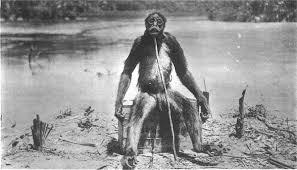
The only photograph of the De Loy’s Ape
Since time immemorial, as it now transpires, the better organized Amerindian peoples who lived around this territory took for granted the existence therein of extremely primitive peoples of various kinds, which they appear to have regarded as being closer to what we would term “animals” than to themselves. It must not be overlooked, however, that, in this respect the South American Amerinds do not–or, at least originally did not–subscribe to our concepts of humanity, bestiality, or deity; in fact, it is clear that in some cases at least all three blended into one systematic plan along with whole hosts of other entities that we might call “spirits” and so forth. Thus, when asked what some creature, to which they had assigned a particular name, might be, they might just as readily give an answer that meant, to them, people so low in the scheme of things in their estimation as to be (again, to them) mere animals, as they might say that they were animals that walked on the ground on their two hind legs. Then again, there is definite evidence that in the area of which we speak, the more advanced (though still unsullied by contact with outsiders) tribesmen did not draw a line between what we call man and animal at any point, such as at the use of a comprehensible language, or of tools, nor even the knowledge of fire.
Colonel Fawcett made an expedition in company of two Englishmen named Manley and Costin, from Bolivia into southwestern Matto Grosso, in the year 1914. They reached the Guapore River, a tributary of the Madeira, at about 14° S. 60° W. and then proceeded north and then east into the Cordilheira dos Parecis. After some weeks they stumbled upon an Amerindian people calling themselves the Maxubis, who were sun worshippers and showed many signs of having been descended from a once much more highly cultured people, for they had names for all the visible planets. After staying with them for some time the party proceeded for some days northeast into completely uninhabited and undisturbed forest. On the fifth day, they hit a trail. Col. Fawcett then writes:
“As we stood looking from right to left, trying to decide which direction was the more promising, two savages appeared about a hundred yards to the south, moving at a trot and talking rapidly. On catching sight of us they stopped dead and hurriedly fixed arrows to their bows, while I shouted to them in the Maxubi tongue. We could not see them clearly for the shadows dappling their bodies, but it seemed to me they were large, hairy men, with exceptionally long arms, and with foreheads sloping back from pronounced eye ridges, men of a very primitive kind, in fact, and stark naked. Suddenly they turned and made off into the undergrowth, and we, knowing it was useless to follow, started up the north leg of the trail.
“It was not long before sundown, when, dim and muffled through the trees, came the unmistakable sound of a horn. We halted and listened intently. Again we heard the horn call, answered from other directions till several horns were braying at once. In the subdued light of evening, beneath the high vault of branches in this forest untrodden by civilized man, the sound was as eerie as the opening notes of some fantastic opera. We knew the savages made it, and that those savages were now on our trail. Soon we could hear shouts and jabbering to the accompaniment of the rough horn calls–a barbarous, merciless din, in marked contrast to the stealth of the ordinary savage. Darkness, still distant above the treetops, was settling rapidly down here in the depths of the wood, so we looked about us for a camping site which offered some measure of safety from attack, and finally took refuge in a tacuara thicket. Here the naked savages would not dare to follow because of the wicked, inch-long thorns. As we slung our hammocks inside the natural stockade we could hear the savages jabbering excitedly all around, but not daring to enter. Then, as the last light went, they left us, and we heard no more of them.
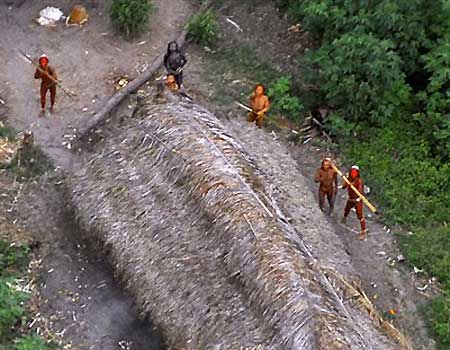
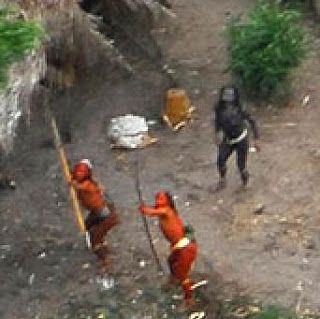
“Next morning there were no savages in our vicinity, and we met with none when, after following another well-defined trail, we came to a clearing where there was a plantation of mandioca and papaws. Brilliantly colored toucans croaked in the palms as they picked at the fruit, and as no danger threatened we helped ourselves freely. We camped here, and at dusk held a concert in our hammocks, Costin with a harmonica, Manley with a comb, and myself with a flageolet. Perhaps it was foolish of us to advertise our presence in this way; but we were not molested, and no savage appeared.
“In the morning we went on, and within a quarter of a mile came to a sort of palm-leaf sentry-box, then another. Then all of a sudden we reached open forest. The undergrowth fell away, disclosing between the tree boles a village of primitive shelters, where squatted some of the most villainous savages I have ever seen. Some were engaged in making arrows, others just idled–great apelike brutes who looked as if they had scarcely evolved beyond the level of beasts.
“I whistled, and an enormous creature, hairy as a dog, leapt to his feet in the nearest shelter, fitted an arrow to his bow in a flash, and came up dancing from one leg to the other till he was only four yards away. Emitting grunts that sounded like ‘Eugh! Eugh! Eugh!’ he remained there dancing, and suddenly the whole forest around us was alive with these hideous ape-men, all grunting ‘Eugh! Eugh! Eugh!’ and dancing from leg to leg in the same way as they strung arrows to their bows. It looked like a very delicate situation for us, and I wondered if it was the end. I made friendly overtures in Maxubi, but they paid no attention. It was as though human speech were beyond their powers of comprehension.
“The creature in front of me ceased his dance, stood for a moment perfectly still, and then drew his bowstring back till it was level with his ear, at the same time raising the barbed point of the six-foot arrow to the height of my chest. I looked straight into the pig-like eyes half hidden under the overhanging brows, and knew that he was not going to loose that arrow yet. As deliberately as he had raised it, he now lowered the bow, and commenced once more the slow dance, and the ‘Eugh! Eugh! Eugh!’
“A second time he raised the arrow at me and drew the bow back, and again I knew he would not shoot. It was just as the Maxubis told me it would be. Again he lowered the bow and continued his dance. Then for the third time he halted and began to bring up the arrow’s point. I knew he meant business this time, and drew out a Mauser pistol I had on my hip. It was a big, clumsy thing, of a caliber unsuitable to forest use, but I had brought it because by clipping the wooden holster to the pistol-butt it became a carbine, and was lighter to carry than a true rifle. It used .38 black powder shells, which made a din out of all proportion to their size. I never raised it; I just pulled the trigger and banged it off into the ground at the ape-man’s feet.
“The effect was instantaneous. A look of complete amazement came into the hideous face, and the little eyes opened wide. He dropped his bow and arrow and sprang away as quickly as a cat to vanish behind a tree. Then the arrows began to fly. We shot off a few rounds into the branches, hoping the noise would scare the savages into a more receptive frame of mind, but they seemed in no way disposed to accept us, and before anyone was hurt we gave it up as hopeless and retreated down the trail till the camp was out of sight. We were not followed, but the clamor in the village continued for a long time as we struck off northwards, and we fancied we still heard the ‘Eugh! Eugh! Eugh!’ of the enraged braves.”
These creatures were apparently called Maricoxis by the Maxubis. They dwelt to their northeast. Due east there were said to be another group of short, black people, covered with hair, who were truly cannibalistic and hunted humans for food, cooking the bodies over a fire on a bamboo spit and tearing off the meat. These the Maxubis regarded as merely loathsome and lowly people. On a later trip, Colonel Fawcett was told of an “ape-people” who lived in holes in the ground, were also covered with dark hair, and were nocturnal, so that they were known in surrounding areas as the Morcegos or Bat-People. These types are called Cabelludos or “Hairy People” by the Spanish-speaking, and Tatus, or armadillos, by several Amerindian groups because they live in holes like those animals. Fawcett also records forest Amerinds as telling him that the Morcegos have an incredibly well-developed sense of smell which prompts even these acute hunters to suggest that they have some “sixth sense.”

